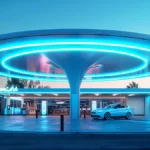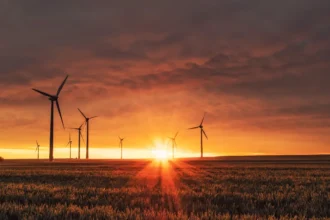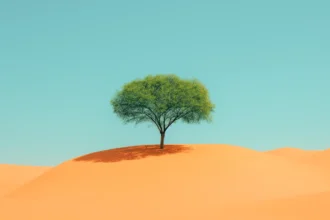A major new report has revealed that the beautiful Himalayan mountains are drowning in plastic trash, with most of it coming from food and drink packaging. The report, released on May 8, 2025, by TheHindu, shows that more than 8 out of 10 pieces of plastic found in the mountains come from things we eat and drink. This shocking discovery comes from a huge trash collection effort across nine Himalayan states.
The Zero Waste Himalaya Alliance, which is a group of many different organizations working together, organized this massive cleanup. They collected and carefully counted more than 121,000 pieces of trash from 450 different places in the mountains. This wasn’t just a cleanup – they wanted to understand exactly what kind of trash is hurting the mountains and who is responsible for it.
Understanding What They Found: Food Packaging Is the Biggest Problem
The most important finding from the cleanup is that 84.2% of all plastic waste in the Himalayas comes from food and drink packaging. This means that when you buy a snack or a drink in these mountain areas, the wrapper or bottle is very likely to end up polluting the environment. The problem is even worse because 70% of this plastic cannot be recycled.
What does “non-recyclable” actually mean? It means these plastics cannot be turned into new products after use. Many food wrappers are made of multiple layers of different materials stuck together in ways that make them impossible to process. When something can’t be recycled, it either sits in landfills for hundreds of years or gets burned, creating toxic smoke.
| Type of Waste | Percentage Found | Why It’s a Problem |
|---|---|---|
| Food and beverage packaging | 84.2% | This packaging is designed for very short use (minutes) but stays in the environment for decades or centuries. Most comes from snacks, instant noodles, and drinks that people consume while traveling or hiking. |
| Non-recyclable plastics | 70% | These materials have no market value, so even waste collectors don’t pick them up. They include chip packets, instant noodle wrappers, and multi-layered packaging that combines plastic with other materials. |
| Energy drink bottles | 22% | Particularly from the brand Sting, these bottles are found in large numbers. Even though they can technically be recycled, the cost of transporting them from remote mountain areas to recycling facilities makes this impractical. |
The volunteers who collected all this trash came from 350 different organizations and worked at hundreds of locations. They found that tourist spots and areas near water had the most trash. This shows that visitors to these beautiful places often leave their garbage behind.
Which Companies Are Creating the Most Mountain Trash?
The cleanup team didn’t just count trash – they also carefully checked which companies made the products causing all this pollution. They found that the same big companies show up year after year as the biggest polluters. According to The Arunachal Times, the top five plastic polluters in 2024 were PepsiCo India, CG Foods, Parle, Coca-Cola India, and ITC.
- Instant noodles are a huge problem – brands like Wai Wai (made by CG Foods) and Maggi (made by Nestle) create tons of non-recyclable packaging. These products are popular because they’re cheap, easy to prepare in mountain areas with limited cooking facilities, and have a long shelf life.
- Energy drinks like Sting (made by PepsiCo) make up 22% of the waste found. These drinks are marketed to tourists and travelers who need quick energy at high altitudes, but their bottles often end up littering the landscape.
- Snack foods from companies like Lays (PepsiCo), Bingo (ITC), and Parle leave behind colorful plastic wrappers that don’t break down in nature. These lightweight packages easily blow around in mountain winds, spreading pollution widely.
Down To Earth reports that the same companies have been top polluters for six years straight. These include big names like PepsiCo, Coca-Cola, Nestle, and many Indian companies like Parle, ITC, and Amul. This shows that the problem isn’t improving – the same companies continue to sell products with packaging that harms the mountains.
Why Mountain Areas Face Special Challenges with Trash
The Himalayan region faces unique difficulties in dealing with trash compared to cities in the plains. The steep slopes, remote locations, and harsh weather make normal waste management almost impossible. When trash collection trucks can’t reach an area, people often resort to burning trash or dumping it in rivers.
According to Frontiers, the main challenges include the difficult mountain roads that make trash collection very hard, the cold climate that slows down natural breakdown of materials, and limited flat land for proper waste facilities. In many mountain towns, there simply isn’t enough space to build proper landfills or recycling centers.
- Remote locations mean that even if plastic is collected, transporting it to recycling facilities in distant cities costs too much money and fuel. This makes recycling economically unfeasible for most mountain communities, even when they want to do the right thing.
- Limited government resources for mountain regions mean that local authorities often don’t have the equipment, staff, or training to manage waste properly. Many small mountain towns have no formal waste collection system at all.
- Seasonal tourism creates huge spikes in waste generation during peak visitor months, overwhelming the limited systems that do exist. When thousands of tourists visit a small mountain town, they can generate more trash in a month than the local population does all year.
StudyIQ points out that traditional waste management models that work in cities simply don’t work in mountains. For example, the concept of Extended Producer Responsibility (where companies take back their packaging) is nearly impossible to implement in remote mountain villages that might be days away from the nearest city.
Moving Beyond Recycling: What Needs to Change
The Zero Waste Himalaya Alliance is calling for completely new approaches to solve this problem. They say that focusing only on recycling won’t work because most of the plastic can’t be recycled anyway. Their report states: “Over the past six years, the data has indicated that the Himalayan waste crisis is fundamentally a production and systems issue rather than a post-consumer waste management flaw.”
What does this actually mean? It means the real problem starts with how products are made and packaged, not just with how people throw away trash. The alliance believes companies need to completely rethink their packaging, especially for products sold in mountain regions.
The organizations are pushing for special “mountain-sensitive policies” that recognize the unique challenges of waste management in high-altitude regions. They want more resources and attention given to this growing crisis before it’s too late to save these precious ecosystems.
The Next Steps: Upcoming Cleanup and Meeting
The Zero Waste Himalaya Network is not stopping with just this report. They are planning to hold a major meeting in April 2025 in Bir, Himachal Pradesh, to discuss solutions. They have also scheduled the next annual cleanup for May 26-30, 2025, when thousands of volunteers will again collect and count trash.
This year’s cleanup will be even bigger, with organizations from neighboring countries like Bhutan and Nepal joining in. The effort is supported by international networks like GAIA-Asia Pacific and Break Free From Plastic, showing that this is becoming a globally recognized problem.
The most interesting finding from the report is that Sikkim generated the most trash with 53,814 items (44% of total) across 86 sites. This is surprising because Sikkim is often considered one of India’s cleanest and most environmentally conscious states. This shows how serious the problem has become even in places trying to stay clean.
What This Means for the Future of the Himalayas
The Himalayan mountains are not just beautiful places – they are crucial water sources for billions of people across Asia. When plastic pollution damages these ecosystems, it affects water quality for countless communities downstream. This makes solving the plastic problem urgent not just for environmental reasons but for human health too.
The report makes it clear that individual actions like proper disposal are not enough. The solution requires system-wide changes in how products are designed, distributed, and managed after use. Companies that profit from selling products in these regions need to take responsibility for the waste their products create.
As one volunteer from the cleanup put it: “We can keep picking up trash forever, but until companies change how they package their products, we’ll never solve the real problem. The mountains deserve better than becoming dumping grounds for plastic that will outlast all of us.”











